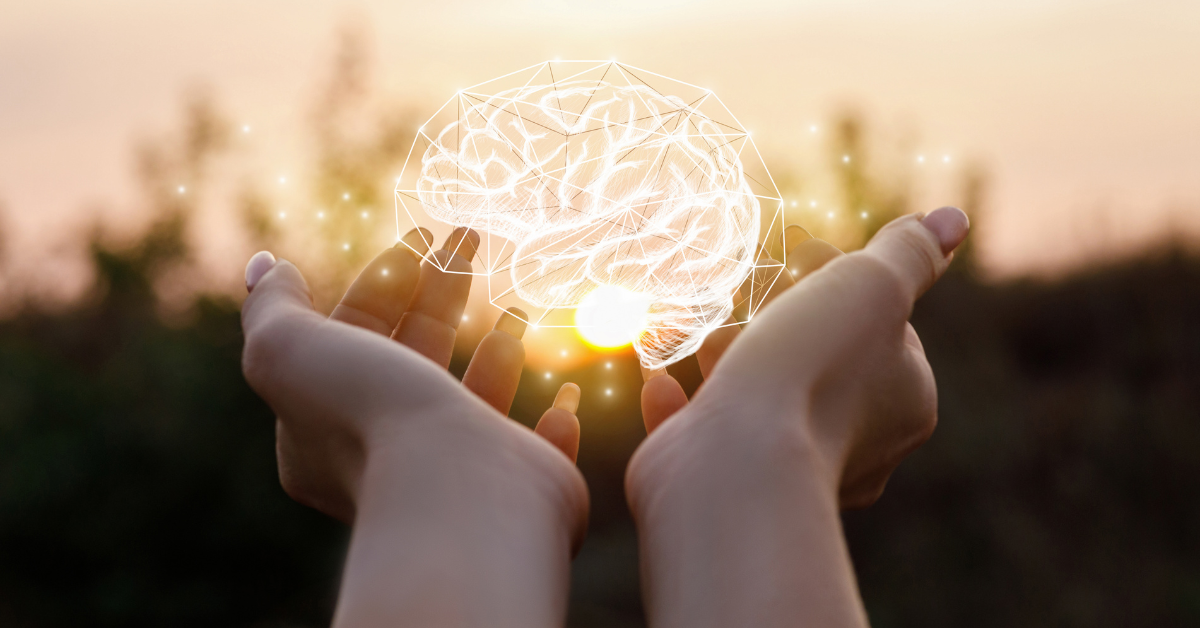A Complete Look at Brain-Based Learning and How it Can Improve Student Outcomes & Well-Being, as Well as Benefit Teachers, Education and Society at Large
Education plays a huge role in preparing individuals to be capable within a constantly changing and interconnected society. This leaves schools and educators with huge challenges: meeting the needs of a diverse student population that varies widely in learning styles, backgrounds, and abilities, fostering an inclusive and equitable learning environment, and ensuring that students are safe and can fully access the curriculum.
These days, advances in and access to technology bring new opportunities but also new challenges - how can educators teach students to know facts from falsehoods within the digital world, and how to stay safe? How can they combat issues of inattention and distraction due to phones and screens?
These issues fall alongside schools’ core responsibility to ensure their students develop essential academic and lifelong skills.
Ultimately, all educators are tasked with preparing students academically, socially and emotionally for the complexities of the modern world. How can they possibly meet this need?
The answer lies in where all learning begins: the brain.
For hundreds of years, the brain was a mystery to scientists (and educators). For centuries it was believed the brain was a box to be filled with knowledge - when in fact, it is a complex organ of billions of neurons, networks and potential.
"The brain is the organ of destiny. It holds within its humming mechanism secrets that will determine the future of the human race."
Dr Wilder Penfield
OM CC CMG FRS, Neurology and Neurosurgery, McGill University
Over the last several decades, huge strides in understanding the brain have been made, making its role in education and learning impossible to ignore.
Critical to education is understanding how the brain learns - how it learns efficiently, how it struggles to learn, and importantly - how it can improve its capacity to learn. This knowledge is an imperative that must be integrated into today’s educational practices.
Enter brain-based learning. While this term has become a bit of a buzz concept in recent years, it does energize the conversation. Many educators, school administrations, policy makers, even world leaders - recognize the brain belongs in any conversation about education, educational reform, and our responsibility as a society - to ensure that every student, no matter what their ability, has the right to develop a strong brain.
In this guide, we’ll look at what brain-based learning is and why it’s so important to student outcomes in education today.
In its simplest terms, brain-based learning involves using insights from neuroscience to inform teaching and learning. It is a concept that relies on understanding how the brain processes information, retains knowledge, uses knowledge, and engages with various stimuli and how this understanding can support the educational process to ensure the best outcomes for every student.
There are many ways to interpret and action “brain-based learning” concepts, including efforts to enrich learning through multi-sensory activities, integrating mindfulness practice, or simply ensuring students have adequate nutrition, sleep, and exercise (all essential for a healthy brain).
The specific application of brain-based learning that holds the most promise is based on the brain’s capacity to change - its neuroplasticity. By incorporating neuroplastic programming into a student’s educational day, all learners can improve their brains’ functioning leading to improved cognition, learning, academic performance and social-emotional well-being.
Neuroplasticity, the term that describes the brain’s ‘plasticity’ - its ability to change in response to learning and experience - has wide and important implications within education.
Actioning neuroplastic programming into education holds significant potential for improvements in education because it can systematically address the challenges described earlier – meeting diverse learners’ needs, individualized yet inclusive programming, and preparing students for an unpredictable future.
Personalization of Programming
When educators understand a student’s unique brain makeup, they can tailor programming to their very specific cognitive needs. Later in this guide, you’ll learn more about cognitive functions that underlie learning, and how programs can be customized to meet the individual needs of each student.
Improving Cognitive Capacities
By leveraging neuroplastic principles, programming can strengthen core cognitive functions responsible for academic, cognitive, social-emotional, and lifelong skills. All students – from high achievers to those with complex learning disabilities – can benefit.
Empowering Teachers
Policies can prioritize teacher education to include key principles from neuroscience that inform educational practice including how to facilitate effective neuroplastic programs. Teachers can learn how to implement daily cognitive programming into their classrooms and deepen their own professional fulfillment as they collaborate with their students to build and experience the enduring benefits of strong cognitive profiles.
Flexible Design
Every student is different, and perhaps – every school is too. Effective brain-based programming can adapt to each student, and to the specific needs and goals of each school and school system. Schools can determine the appropriate application of programs to serve their students and that reflect their own values and infrastructure.
While any activity or approach that promotes a healthy brain state is positive, this guide will focus on what experts have called one of the most promising applications of neuroscience in education today - the incorporation of the brain-based principles of neuroplasticity in education. As educators, we can put the brain in the education equation.
Here’s a guide to learn more about this fascinating field of human potential.
A neuroplastic approach stands out among brain-based learning concepts due to its emphasis on harnessing the brain's potential through the application of targeted, individualized, and evidence-based cognitive programs.
As scientists’ understanding of the brain has deepened, particularly with the advent of advanced imaging techniques like fMRI and EEG, researchers have gained valuable insights into how the brain processes information, forms connections, and adapts to experiences. This scientific progress has laid the groundwork for the emergence of brain-based learning and neuroplastic programming in particular.
With a goal to inform educational practice, the most significant lessons come from key principles of neuroscience and cognitive psychology. Certainly, the ways the brain shapes our every action are vast and for the purposes of a focus on learning and education, it is useful to examine some key cognitive processes that shape learning. Let’s review these core fundamentals as a construct for brain-based learning in the classroom.
Attention
It comes as no surprise that attention is crucial in learning and education. Our prefrontal cortex serves as the gateway to all cognitive processes, allowing students to focus on relevant information while filtering out distractions. One’s capacity to attend directly impacts our ability to engage with instructional material, participate in class discussions, and complete tasks - all ultimately contributing to independent learning. Research has demonstrated changes in attention when a brain-based cognitive approach has been applied.
Read more about a brain-based approach to supporting students with attentional issues and ADHD:
Is ADHD a Learning Disability?
ADHD and Neuroplasticity: How to Overcome Attention Difficulties
Memory
Memory is foundational to learning as students acquire knowledge and experiences. Their ability to encode, store, and retrieve information from memory influences their capacity to understand and apply concepts over time. From a brain-based perspective, memory is complex, so any intervention to improve it demands the same level of sophistication.
Read more about memory as an interplay of multiple cognitive processes here: Memory Improvement: A New Look at the Impact of Cognitive Functions
Executive Functioning
Executive functioning is a cognitive function that is controlled by our prefrontal cortex and is critical to a student’s ability to set goals and execute plans, manage time, switch focus, pay attention in class, organize themselves, multi-task and problem-solve. Mental initiative is a hallmark of this function. It can be thought of as the conductor that orchestrates all of our learning and as such a critical cognitive process to enhance for life-long learning.
Read more here: How to Improve Executive Functioning: Can We Strengthen Our Brains?
Language Processing
Language serves as the primary vehicle for communication, instruction, and learning. Proficiency in language facilitates students' ability to comprehend academic material, express their thoughts and ideas effectively, and engage in meaningful discourse with peers and teachers. Language enables students to comprehend textbooks, follow instructions, participate in discussions, and articulate their understanding through verbal and written means. Language is required for us to participate in the world. Language is also as complex as it is essential, with discrete cognitive functions responsible for different aspects of expressive, receptive, written and spoken language skills. Understanding the role of the brain’s different language processes allows educators to understand and strengthen effective language and communication skills.
Read more about the range and impact of language difficulties here: Language Difficulties in Children: Symptoms, Causes and Solutions
Emotional Intelligence
Some experts name this a higher predictor of success than academic performance - emotional intelligence involves the understanding of and navigation through our nonverbal world, and is responsible for our awareness of self and others, and for emotional regulation. Secure emotional intelligence means being equipped to handle stress, form positive relationships, and engage in effective communication. Standardized measures of social and emotional wellness have improved with cognitive training.
Learn more: How Neuroplasticity Principles Transform Students’ Mental Health
Neurodiversity
A later section describes this in more detail, and for now, it’s enough to acknowledge applying a cognitive approach to understanding learning disabilities and difficulties offers a profoundly different perspective and possibilities.
Specific learning disabilities such as Attention Deficit Hyperactivity Disorder (ADHD), Dyscalculia and Dyslexia, Dysgraphia, and Auditory Processing challenges all have their origin in the brain. And as such, educators and parents gain important insight when neurodiverse profiles are interpreted as the result of a combination of under-functioning cognitive processes.
Insight into each learner’s unique cognitive profile allows educators to develop greater understanding and compassion for neurodiverse learners; and to identify an action plan of cognitive exercises.

A pivotal shift in modern neuroscience occurred in the 20th century when Alexandre Luria (and others) identified that learning in the brain is not strictly localized. That is, there is not a ‘math’ region of the brain or a ‘memory’ region. Instead, discrete cognitive functions are at play that come together to allow us to carry out all of our daily activities and intellectual processes.
Cognitive functions is the term used to describe the job or role of regions or networks of regions of the brain.
Learning as we know it – from learning the days of the week to solving a complex calculus equation - is a dynamic interplay of discrete cognitive functions seamlessly working together.
Some examples:
Reading: our brain’s ‘eye’ needs to scan smoothly across the page, recognizing each letter and word; the brain’s phonemic memory must kick into gear, putting sounds to the syllables. Our brain must process the meaning of each word, and how each word relates to the next word, drawing on memory and logic to make sense of it. All along our brain’s attentional functions guide the overall process. This is all before reading aloud – which would involve additional cognitive processes.
Solving a math equation: as in reading, our brain’s ‘eye’ must scan the numbers, ensuring smooth tracking of each digit, any operational sign or decimal, so they are not misread or missed. The brain’s ‘calculator’ is activated, utilizing both memory and computation of numbers. The brain must understand the logic or sequential principles of the equation (in fact these are two different functions). Here again, attention ensures a concentrated effort – until the task is complete.
It is the brain that orchestrates this intricate interplay, as discrete cognitive functions collaborate to execute the interconnected process of learning and performance.
While difficult to provide an exact number of cognitive functions, there are definitely those known to be essential in the realm of learning. The following encompasses key processes in the acquisition of most academic, vocational, social-emotional and lifelong skills:
You can learn more about cognitive functions in our Beginners Guide to Understanding Cognitive Functions | Arrowsmith
Each of these cognitive functions operates along a continuum of capacity, ranging from a severe deficit to above-average proficiency. Of course, this underscores the immense variability in how individuals engage and learn. Each human possesses a unique combination of strengths and weaknesses across these cognitive functions, forming a distinctive cognitive profile.
For example, an individual might excel in the visual memory of symbols, and may be a strong reader, but appear almost ‘blind’ when trying to remember faces or landmarks.
Another person might be a gifted orator, and yet struggle to communicate in writing.
This diversity in cognitive wiring explains the profound differences among humans, as the interplay of cognitive functions shapes the way we perceive, process, and respond to information.
So, why is all of this important to education?
One’s unique cognitive profile (the distinctive combination of strengths and weaknesses across various cognitive functions), makes up a personalized blueprint of how someone's brain processes and interacts with the world around them, how they learn, and how they understand themselves and others.
Looking at a student’s behaviour through this cognitive lens is crucial for educators as it forms the basis for understanding their students’ needs, strengths and challenges. It can also be part of building a brain-based solution to address student needs. The next section examines how this lens can inform the approach that harnesses neuroplasticity to build on the strengths of, and address the weaknesses of, one’s cognitive profile.
In the meantime, for any educator or parent curious about understanding a student or child through this cognitive lens, a tool is available. This complementary questionnaire generates an individualized report that provides insights into an individual’s cognitive strengths and weaknesses. This tool can provide awareness, guidance and even first steps towards a customized approach to improving learning.
.webp?width=1200&height=628&name=Cognitive%20Function%20New%20BLOG%20(1).webp)

A well-functioning brain is responsible for positive academic performance. Students with secure cognitive functions are better equipped to tackle complex tasks, engage in critical thinking, and excel in various subjects. This translates into higher academic achievement and a greater likelihood of success in educational and professional endeavours.
A strong brain possesses high order cognitive abilities such as attention, memory, executive functioning necessary for problem-solving, language processing abilities, all essential tools for students to thrive within demanding academic, professional and global environments.
It’s clear that the brain is fundamental to learning, and belongs in any conversation about supporting learners. What does this actually look like? How can and should this inform educational practice?
It starts with understanding the concept of “cognitive enhancement”, which is the application of neuroplastic principles to lead to positive, measurable and meaningful improvements to the brain. Evidence-based research has proven that with targeted and sustained practice in targeted cognitive programs, it is possible to improve the brain structurally and functionally, leading to improvements in learning.


Indeed for centuries, it was believed that the brain was unchangeable. Even today, most educational practices are based on this model, and students tend to be categorized based on perceived strengths and challenges. Neuroplastic approaches put new meaning to the concept of “potential”, and can have a direct impact on the ease and independence of one's learning ability.
Building this aspect of brain-based learning into educational policies and programs means the following:
Tailoring Approaches
The acknowledgement of neuroplasticity encourages educators to tailor their approaches based on individual needs. Recognizing that the brain can respond to specific cognitive exercises means educators can customize students’ programs to their unique cognitive profiles to enhance functioning. The learner’s cognitive profile is not fixed: it can be transformed.
Overcoming Learning Challenges
Neuroplasticity offers new opportunities to individuals facing learning challenges. Rather than accepting limitations imposed by fixed models or mindsets, educators can explore and implement programming that leverages the brain's ability to change. This can be particularly empowering for students with learning differences or disabilities, as seen in this research.
Cultivating Growth Mindset
Embracing neuroplasticity promotes a growth mindset among students and educators. The belief that intelligence and abilities can be developed through effort and dedication can foster a culture of perseverance, grit, and continuous improvement within educational settings.
Reshaping Educational Systems
Neuroplasticity calls for a re-evaluation and reshaping of educational systems. Fixed models have resulted in standardized approaches that often have not recognized the diverse capacities nor the potential for cognitive growth among students. Schools embracing neuroplasticity are looking to integrate dynamic, inclusive programs for all learners.
Promoting Lifelong Learning
Neuroplasticity also promotes the idea that learning is not confined to specific phases of life. It encourages individuals to adopt a mindset of lifelong learning, emphasizing the potential for intellectual growth and development at all ages.
The implementation of the principles of neuroplasticity is a paradigm shift in education, dismantling the outdated belief in fixed capacities. This concept brings optimism, adaptability, and personalized approaches to learning, empowering educators and students to explore the limitless possibilities for cognitive growth and improvement throughout life.
From Theory to Practice
The first known application of neuroplasticity within an educational setting is Barbara Arrowsmith-Young’s Arrowsmith Program. It involves an ecosystem made up of multiple and discrete cognitive programs, assessment and tracking mechanisms, and a structured teacher-facilitator role. Through personalized programs, adaptive assessments, and real-time feedback mechanisms, Arrowsmith supports both students and educators as the methodology optimizes the brain’s capacity to change. It was established in 1978 and today educational organizations around the globe deliver the methodology to their own students.
The fundamental approach has five core neuroscience principles at the heart of its design:
The cognitive task must isolate, target and stimulate the intended cognitive function, while limiting the interference of other functions that may compensate.
The cognitive task provides clear and singular goals, with built in mastery and facilitator support to promote sustained focus and engagement.
The cognitive task is novel - different and unfamiliar enough that the cognitive function is suitably engaged and stimulated without the option for compensations. The task grows progressively more challenging, furthering the complexity and motivation of the participant.
Enduring gains result from consistent practice, or “sustained engagement”. Feedback and reward is built into every moment of participation to support repeated practice.
The level of difficulty of each task is calibrated to provide the right level of challenge, leading to mastery and progressive improvements. Research has shown practice just at the edge of what is attainable drives neuroplastic change.
Every aspect of the Arrowsmith methodology adheres to these key principles necessary to drive neuroplastic change in the brain. There are other programs that rely on similar neuroscience. What makes Arrowsmith different is its robust ecosystem, consisting of brain exercises, state of the art technology, teacher training, support and professional development, and ongoing monitoring of student progress. All components are important factors in facilitating measurable, enduring neuroplastic change. Arrowsmith continues to develop new models that integrate brain-based approaches into education.
Read more about the critical success factors in neuroplastic training:
“Reading scores for these students have increased, with some students making a gain of a year or more in four months. Other students have seen improvements in math, in writing, and penmanship. We are proud of our students and love celebrating their successes”.
“Arrowsmith has proven to be a vital and integral program at our school. One of our core values is that every student matters and having the Arrowsmith program available is one way of fulfilling that core value.”
Marianne Vangoor
Principal, Arrowsmith Administrator, Canada
“The Arrowsmith Program has changed the lives of so many Providence School students in such amazing ways. Students who were not excelling academically and went through the program not only ended up in the National Honor Society, but have gone on to have productive college careers. Others who lacked confidence in social settings started to understand interactions and better relate to all persons. I really can’t express the changes for not only the students, but for their families due to the Arrowsmith Program.”
DeShuan Mills
Principal, Arrowsmith Administrator, U.S.A.


The Economic Cooperation and Development (OECD) published its vision for schools in 2030, the Learning Compass, while the World Economic Forum (WEF )has identified the 21st Century Skills every student needs, including the ability to think critically, combat misinformation, untangle complex narratives and communicate effectively.
The OECD identifies that students’ well-being should be valued as much as academic performance.
Both the WEF and OECD identify key elements they see as essential for all learners. If we look at what underlies these essential elements, it is the brain.
Yet traditional schooling still remains largely unchanged from what it looked like decades ago. Students still follow a conventional curriculum, accommodations are given to those who are struggling and the individual’s unique cognitive profile is not taken into account.
Today, many educators, professionals and policymakers are recognizing that education and school curricula must evolve to meet the needs of today’s students.
Research demonstrates that effective cognitive programming that harnesses neuroplasticity, like the Arrowsmith Program, has a measurable effect the brain and learning. Changes have also been shown in the key components identified by the WEF and OECD to be critical for success in lifelong learning.
Schools and educators have an essential role to play when it comes to strengthening students’ brains and overall well-being.
When educators implement neuroplastic programs, they are able to eliminate accommodations for those with learning challenges (helping individuals overcome their learning disabilities), and strengthen the brain and experience of all learners. When this is done successfully, studies show that increases in academic and cognitive scores occur.
Schools are not only able to improve the output and academic success of their students, but also build and sustain positive mental health and well-being in their students that lead to long-term happiness - well after they’ve left school.
A brain-based approach supports the goals of all educators - to improve the academic outcomes of their students and to prepare them with the foundational skills and abilities to thrive in the future.



For much of the last century, there was little to no understanding of students with learning issues. Those who struggled academically were labeled as lazy, unmotivated, or lacking intelligence. If students couldn’t cope or keep up, they simply failed or were ignored. In some cases, students were punished, or even excluded from the educational system altogether.
Thankfully educators today are very different from the educators of the past. There’s been a steady evolution in the understanding of students with learning disabilities and difficulties and the development of approaches to serve their needs.
This includes important advocacy and awareness leading to the field of special education, the recognition that ‘one size’ does not fit all, and an effort to de-stigmatize the label. Even the definition of having a learning disability rightfully acknowledges these are bright students; having at least an average IQ and in fact many are known to score above that range.
To support students with learning challenges, the vast majority of school systems rely on individualized educational plans (IEPs) to indicate the need for accommodations, modifications, and assistive technologies. Remediations like repetition and drill-based learning, extended testing time or use of assistive technology is common. The curriculum is also frequently modified, so students who are unable to meet expectations are not unfairly treated or evaluated.
Specific learning disabilities are typically painted with the same brush. Take dyslexia, for example. Conventional strategies may include providing extra time for reading and writing tasks, utilizing multisensory teaching methods that engage visual, auditory, and kinesthetic modalities, structured literacy instruction, and implementing assistive technologies such as text-to-speech software or audiobooks. Additionally, teachers may provide explicit instruction in phonics, vocabulary, and comprehension strategies, along with frequent opportunities for practice and reinforcement.
There is a fundamental limitation to this approach. Remember the uniqueness of our cognitive profiles, that no two brains are alike? So it follows, no two dyslexic brains are alike. Two people can arrive at the same diagnosis, but possess very different cognitive makeups. One may struggle with the visual memory component of reading, another with phonics, still another with comprehension. Meaning simply, even with the dedicated efforts of educators, the considerable costs of additional resources, and the heroic efforts of students - some people with Dyslexia continue to struggle with reading, perhaps for the rest of their lives. Many, even if they’ve acquired a functional level, will never know the experience of “enjoying a good book”.
Read about the Many Faces of Dyslexia here: What Does Dyslexia Look Like? The Different Faces of Dyslexia
Limited effectiveness is just one risk to conventional methods: there are other shortcomings including their short-term nature, dependence on compensatory techniques that take time and effort and may not always be available, increased stigma, and the negative impact on long-term learning, independence, and skill development.
Another recent shift in education is being observed in learning support and resource classrooms. This concept - providing a different classroom, teacher, and curriculum to those with learning difficulties - has been commonplace since the late 1970s. Some schools are moving away from this withdrawal model, as they have evaluated it as having limited effectiveness. As such, in an effort to provide more inclusive and equitable opportunities, they are endeavouring to meet all students’ needs within the mainstream class. And it could be argued the limited effectiveness is not due to the classroom but to the tools and methodologies being used to address the learning difficulties which don’t address the source of the learning challenge.
Despite all the noble work - educators (and parents, and students) still feel considerable frustration: the stigma of learning disabilities remains, resources are constrained, and most tools are not meeting their students’ needs. Even the concept of inclusion is incredibly challenging for schools and educators to realistically achieve.
The enduring struggles of those students with learning difficulties is also concerning, and have been well documented. In Canada alone, a large and concerning study, found when compared to peers without learning issues:
Children with learning disabilities were:
Young adults with learning disabilities were:
Adults with learning disabilities were:
There’s no question that the risk and impact of learning disabilities extend beyond school and even beyond the individual experiencing them. This perhaps is the most urgent reason to recognize a brain-based learning approach: the cost of ignoring and not addressing the brain’s role in learning issues is far too great.
Learn more about the Cost of Learning Disabilities: The Cost of Learning Disabilities, and the Solution
There is hope.
Certainly, there has been increasing awareness of the brain’s role in learning, including neurodiversity awareness and that students have different learning styles - even recognizing what some of those brain-based strengths and weaknesses may be. A common practice, for example, is encouraging students to find and lean on their strengths, with the hope that they can find different avenues of learning or even post-secondary paths.
The risk to this - and any application of accommodation and modification of materials and tools - is that the underlying premise is outdated.
That is, when a tool is provided to a student to work around their learning disability - either to lessen the demand, ‘do the work’ for the student, or to simply lower the expectations – it assumes that the student’s cognitive abilities are fixed and unchangeable.
The reason why a brain-based learning approach is so vital and perhaps most urgently required for students with learning disabilities and difficulties, is because the struggle does not have to exist. Neuroplasticity has taught us - our brain is changeable - and we can harness this ability to strengthen the weak cognitive functions underlying a student’s learning disability.
.jpg?width=1200&height=628&name=READ%20THE%20BLOG%20(1).jpg)

Advances in neuroscience, psychology, and education research have demonstrated the brain's ability to adapt and change. This scientific progress rejects the long-standing belief of the fixed brain and provides a foundation for targeted and effective interventions for students with learning disabilities.
Today, innovative schools know that while accommodations and modifications may offer temporary or limited relief, a more proactive solution is possible. A solution informed by science: learning disabilities can be addressed through the rewiring of neural pathways and the strengthening of the cognitive functions causing the learning issues.
With the adoption of this concept – a dynamic understanding and application of the brain's malleability - educators today can explore interventions that actively and fundamentally transform the reality of students with learning disabilities.
Let’s take the earlier example of Dyslexia. Remember how different the brains are of students with this same diagnosis? Consider this:
Each student receives a customized neuroplastic program, tailored to the very cause of their Dyslexia. For many students who participate in a comprehensive program to address those cognitive functions most impacting their learning - they are de-identified as having learning disabilities. This tailored approach is possible through identifying and strengthening discrete cognitive functions.
While conventional psychoeducational assessments will focus on academic achievement and standardized testing with the goal of reaching a diagnosis, a cognitive assessment identifies the specific functioning of a range of cognitive processes. This can provide a deeper understanding of the individual's learning experience, behaviours, and even self concept.
This approach also triages the specific cognitive function(s) that need improvement. Educators trained in neuroplastic interventions can tailor programs to suit each student’s unique brains.
Learn more about the Arrowsmith Cognitive Assessment.
The impact of this brain-based learning approach for students with learning disabilities cannot be overemphasized. Learning disabilities and difficulties are not lifelong. They are not fixed. They can be overcome.
Diagnoses including dyslexia, dyscalculia, dysgraphia, memory, processing speed, auditory processing, comprehension, executive functioning, working memory, non-verbal thinking have all been addressed through cognitive programming.
Research shows that students initially identified as having a learning disability no longer need or even qualify for resource support once their cognitive programs are complete.
Students’ rate of learning is accelerated, and there are significant gains in the acquisition of academic (and day-to-day) skills.
“The Arrowsmith Program is instrumental in changing the developing course of the majority of children with LD…”
Dr. William Lancee
Head of Research, Department of Psychiatry, Mount Sinai
“The most exciting thing about Arrowsmith is the joy in seeing the change in students. I have watched with growing excitement as I observe the changes in our students’ abilities and in their optimism for the future. I feel privileged to be part of the unlocking of the potential of young people. Their dedication to working to create the change at the neural level and building their own better futures: that’s the very best of Arrowsmith. Real effort for real change.”
Chris Fairbairn
Educator, Australia
“This student achieved level 3 and 4 in EQAO testing and was demitted from AP [Arrowsmith Program]; currently in grade 9 doing well and was de-identified (as Learning Disabled).”
Principal
Toronto Catholic District School Board, Canada
“This student was at a grade 1 reading level prior to Arrowsmith and is for the first time reading chapter books (novels) for fun. Prior to this, he had 80% of his program modified. He is now re-integrated into Math and Language with no modifications. The growth in this student’s desire to read, cursive writing and excel in language has brought the student’s mother to tears during parent/teacher interviews.”
Arrowsmith Teacher
Toronto Catholic District School Board, Canada
“The unique approach at Arrowsmith not only increased my son's cognitive capacity, it strengthened his self-esteem, increased his motivation, and gave him daily experiences of mastery and progression. For all of this and more, we are very grateful for the Arrowsmith Program.”
Anne Marie
Parent of Arrowsmith Participant, Norway
Through a brain-based approach to addressing the core causes of learning disabilities and difficulties, a new era of education is welcomed, with benefits across all stakeholders:
What’s more, the pitfalls that have historically been faced by individuals with learning disabilities, and their families, and their communities and society as a whole - can be alleviated.


Programs proven to change the brain through harnessing neuroplasticity can help students (no matter their current ability) improve their:
“There is neuroplasticity as a function of Arrowsmith training, which improves performance. So - Do precise Arrowsmith cognitive exercises activate and functionally change particular areas or networks of the brain? The answer is, yes.”
Dr Greg Rose
Researcher, Southern Illinois University
Integrating a brain-based approach into schools leads to impacts beyond student outcomes; extending to the educational system and society as a whole.
Fostering Inclusivity
Cognitive training programs foster a more supportive and inclusive learning environment for all students. By addressing diverse cognitive needs, educators can create classrooms where all students participate in programming that suits their individual and developmental goals. A positive and inclusive school culture is one that cultivates empathy, understanding, and a sense of community among students.
Personalized Learning
A brain-based program that identifies each student’s unique cognitive profile - take the Arrowsmith Questionnaire to find a student’s Cognitive Profile - can tailor programming that specifically targets each student’s cognitive challenges, offering personalized interventions that go beyond traditional, one-size-fits-all approaches. As a result, students with learning disabilities experience improved academic performance, enhanced cognitive capacities, increased self-confidence, and greater overall well-being.
Empowering Educators and Avoiding Burnout
Educators benefit from a cognitive approach by gaining access to innovative solutions and methodologies that can enhance their pedagogy. These programs provide educators with insights into neuroplasticity and offer a renewed commitment to engage and equip students. Professional development related to neuroeducation means educators have the knowledge and skills to create dynamic and adaptive experiences for all students.
Future Proofing
In an era where cognitive capacities such as critical thinking, flexibility, adaptability and reasoning are highly valued, a cognitive training program equips students with a stronger brain to thrive. This not only impacts academic success but also ensures they are better positioned for future challenges and opportunities throughout their lives.
A New Era
From a broader societal perspective, investing in cognitive training programs within schools contributes to a more capable and skilled workforce. As students develop a strong cognitive profile, growth mindset and the ability to overcome cognitive challenges, they are better prepared to navigate a rapidly changing world, and lead their generation towards innovation and resilience at a societal level.
A strong brain serves as the foundation for student success. It is the foundation of learning, to effectively process and retain information, engage in critical thinking and problem-solving, and navigate the complexities of their lives – within school and beyond.
A robust brain also supports students' emotional and social well-being, enabling them to manage stress, regulate emotions, and form positive relationships with peers and teachers.
The degree to which a student’s brain is functioning determines their capacity to build resilience and adaptability, overcome challenges, persevere in the face of obstacles, and embrace opportunities for growth. Ultimately, a strong brain is essential for students to maximize their potential, achieve their goals, and lead fulfilling and successful lives.
“There seems to be a story here about cognitive efficiency which includes working memory and attention and learning, the capacity to learn new things. These are really important cognitive skills for success at school and life in general.”
Dr. Rachel Weber
Researcher, University of British Columbia
As reinforced throughout this guide, and across decades of research and application:
The brain can improve, a strong brain can be built.
And so, the application of neuroplasticity within the educational sector should be a right, not a privilege. A daily cognitive training program as part of the school day means equitable access to quality education informed by science.
Offering cognitive enhancement programs universally enables schools and education systems to uphold the principle of equal opportunity and to strive to mitigate disparities in educational outcomes. Every individual has the right to fulfill their potential, and a brain-based program serves as a critical element in achieving this goal.
Ultimately, this approach cultivates a workforce equipped with critical thinking and adaptability, driving societal progress and innovation. Neuroplasticity in education can be a catalyst that transforms every aspect of the field of education, and of broader society: empowering individuals and fueling collective advancement.

